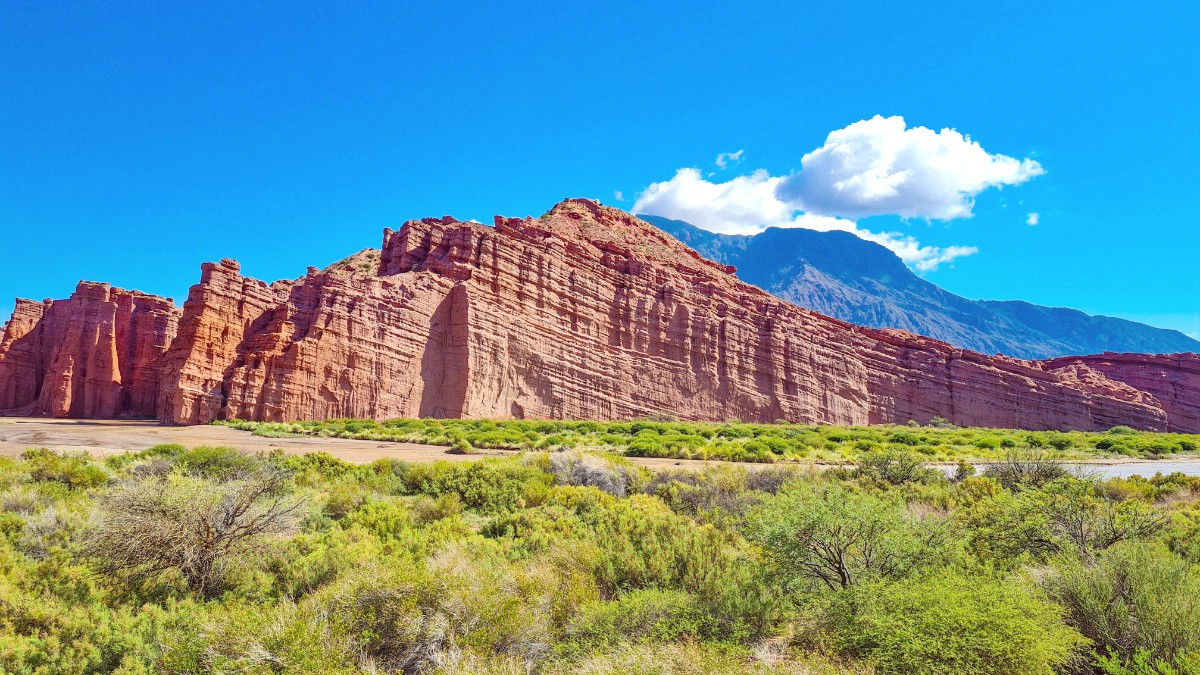
Northwest Argentina, Argentina
Cafayate grants a quiet escape. It presents an opportunity to experience Argentine culture away from the busy pace of larger cities. The town’s charm lies in its simplicity and its deep connection to the land. The local people welcome visitors, often sharing their love for their land and its produce. Consider exploring the vineyards by bicycle, a popular and simple method to visit several wineries near the town center. Each winery is a distinct experience, from large, modern operations to smaller, family-run establishments where the winemakers themselves might pour your tasting.
The town itself is relatively small, built around a charming central plaza. Its layout is straightforward, with a grid of streets that are simple to navigate on foot or by bicycle. Beyond the town limits, the landscape quickly transitions into agricultural land, predominantly vineyards, and then into the more dramatic, barren, and colorful geological formations that characterize the Quebrada de las Conchas. This gorge, a natural monument, stretches north from Cafayate towards the provincial capital, Salta. The journey along Ruta Nacional 68, which winds through the Quebrada, presents a visual feast of towering red rock walls, natural amphitheaters, and unique stone formations. The dry air and substantial temperature variations between day and night, a result of the altitude and desert environment, make an ideal microclimate for viticulture. This specific combination of factors allows the Torrontés grape to thrive, yielding a white wine recognized globally for its distinct aromatic profile.
The surrounding mountains are a dramatic backdrop, their peaks often much higher. These ranges contribute to the arid climate by blocking moisture from the Pacific Ocean. Dry riverbeds, sometimes green with hardy vegetation, weave through the valleys. The region’s geological history is evident everywhere. Millions of years of wind and water erosion carved the soft sedimentary rock into fantastic shapes, making the Quebrada de las Conchas an open-air museum of natural forces.
They developed sophisticated agricultural techniques, including terraced farming, and built fortified settlements, like the impressive Quilmes Ruins located south of Cafayate. These communities stood against Spanish incursions for over a century, engaging in a series of fierce wars known as the Calchaquí Wars. Their endurance and deep connection to the land form significant parts of the region's heritage. The archaeological sites scattered throughout the valleys bear witness to their advanced civilization and lasting spirit.
Jesuit missionaries held a role in the early development of viticulture in the region, seeing the fertile soil and suitable climate for wine production. Cafayate itself was established later, in 1840, by Manuel Fernando de Aramburu, a descendant of one of the early Spanish settlers. Its location was chosen for its agricultural potential and its position along a traditional trade route. The town progressed slowly, keeping its agricultural character. The colonial influence remains visible in the town’s architecture, especially around the central plaza and in the design of older bodegas. Many vineyards in operation today trace their lineage back to these early colonial plantings. The town’s quiet streets and historic church reflect this slower, more traditional pace of growth.
The late 19th and early 20th centuries saw a boom in Argentine winemaking, and Cafayate began to carve out its niche.
The high altitude, distinct soil, and dry climate proved exceptionally suited for certain grape varieties, especially Torrontés. This white grape, an Argentine native, found its purest expression in the Cafayate region.
Winemakers experimented and perfected techniques to manage the unique challenges and opportunities of high-altitude viticulture. Railway construction further connected the region to larger markets, supporting the wine industry’s growth.
The area gained recognition for its strong, robust red wines, though Torrontés kept its signature status.
Today, Cafayate continues to honor its past while looking to the future. The colonial architecture frames the thriving wine industry. The town functions as a living museum, where history unfolds in the vineyards, old buildings, and traditions of its people.
South of Cafayate, the Quilmes Ruins are a testament to the resilient Diaguita people. Visitors explore the restored stone structures, including homes, defensive walls, and ceremonial areas, gaining insight into pre-Columbian life and their sustained struggle. A small museum on site showcases artifacts and provides historical context.
Their sophisticated agricultural methods, unique pottery, and enduring resistance against foreign incursions shaped the region’s distinct cultural identity. Their presence persists in local traditions and the deep connection to the land.
Cafayate’s town center retains its colonial charm, evident in the central plaza and the architecture of its older buildings and bodegas. This historical layering creates a pleasing visual narrative, letting visitors step back in time while experiencing a contemporary wine region.
The unique blend of historical layers creates a destination with deep character and an engaging narrative for every visitor.
Cafayate presents an unique blend of natural beauty, rich history, and world-class wine, all within a tranquil, high-altitude setting. It makes a destination for those seeking relaxation and cultural exploration, alongside opportunities for outdoor activity.
World-renowned high-altitude wines, especially aromatic Torrontés.
The breathtaking Quebrada de las Conchas, with its carved red rock formations.
Here is a brief overview of what to expect during your visit to Cafayate.